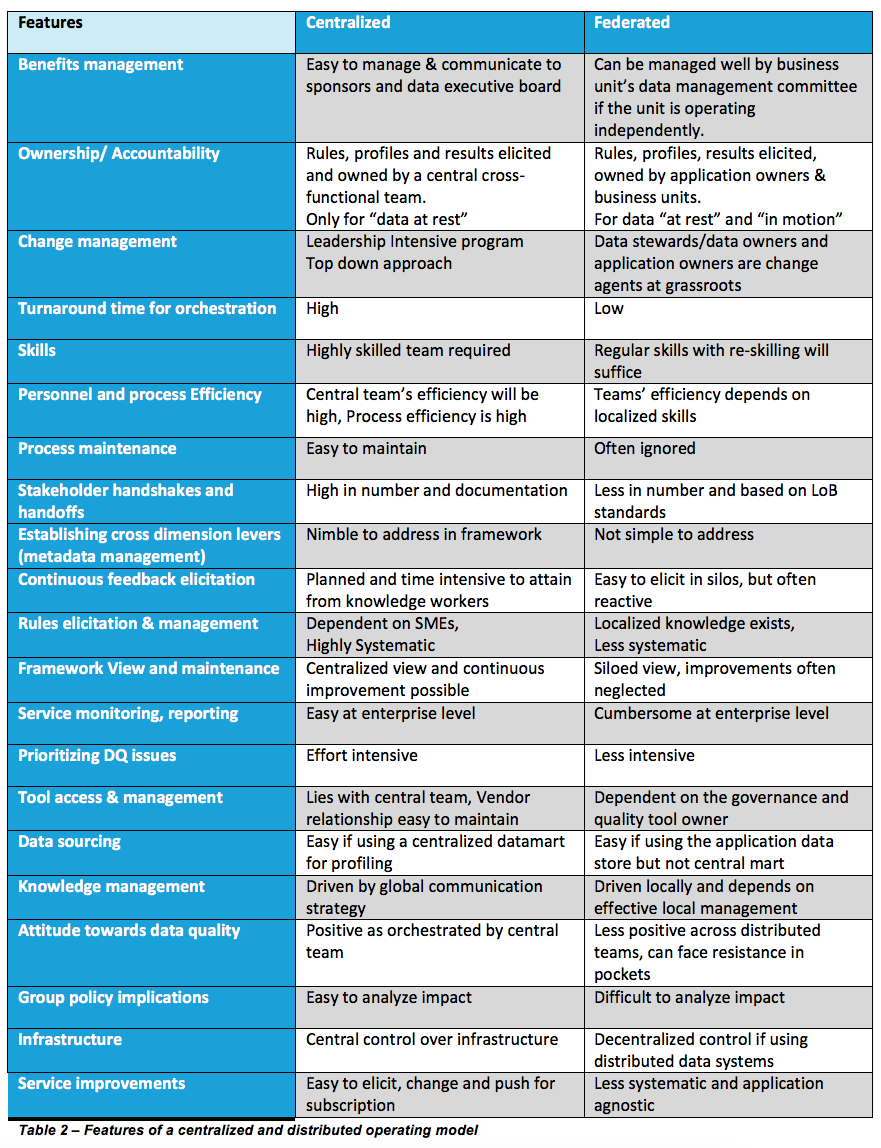To embark on data governance in an enterprise that spans divisions and diverse stakeholders, a well-defined operating model plays a vital role in achieving expected business benefits. The essential aspects of a winning business operating model and roadmap should encompass –
· Identifying stakeholders; defining handshakes and handoffs
· Discovering and standardizing processes, procedures based on policies and guidelines
· Motivation, goals and performance assessment plan to measure progress and report
· Change control with well-planned stakeholder communication strategy
· Implementation roadmap with a work breakdown structure
For the purpose of this article, data quality assessment and monitoring will be used to illustrate of the dimensions of governance. The approach to defining an operating model should take into account the aspects of control, management and existing capabilities in business units. The socio-cultural aspects of an organization govern a successful data quality service orchestration. Some of these aspects include shared business accountability, sponsorship, and attitude towards data governance, knowledge and tendency to embrace changes. Attaining the right balance among the above aspects defines a near perfect operating model that will assist the enterprise reach its data quality goals. Gradual improvement by refining the processes continuously while embracing continuous feedback assists the enterprise as it progresses.
Whether the governance model needs to be centralized or decentralized in the organization should be assessed majorly from a benefits perspective. If the benefits arising from centralizing the governance operations across the enterprise are more than at least 20% than the decentralized model, the call should be taken to centralize.
Often with the centralized model, the skills gap is bridged, the processes yield consistent outcomes irrespective of the business unit, reporting is much easier, decision making and executive buy in at C-level is synonymous, continuous feedback elicitation, improvements and change management can be planed for effectiveness. At the same time, operation rigidity, reduced motivation in mid-level managers and bureaucracy often outweigh the benefits. That’s where the socio-cultural aspects have a major say in formulating the operating model.
Having to define an operating model that sways to either end of a centralized or distributed management doesn’t serve the intended purpose. Attaining a fine equilibrium between control, management and required capabilities that allows stakeholders to embrace the data quality initiative with little reskilling for self-service is suggestible.

For example, each of the modes of Data quality management operations has its merits and demerits as showcased in table 2.

A hybrid approach that allows for a holistic view of data governance with a central control on policies, framework, reporting and local management of other aspects, suits many organizations’ culture.

Exhibit-1: Weighing the balanced model with centralized control and federated management over centralized and distributed models
